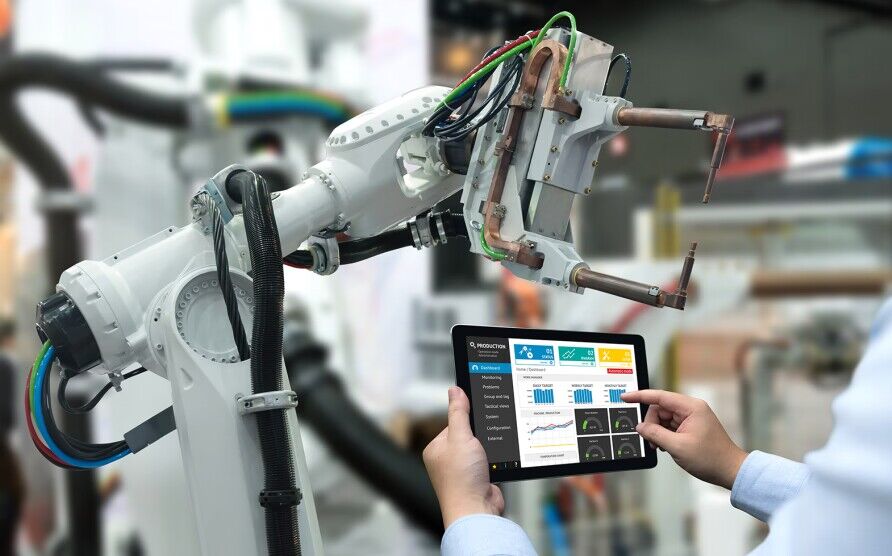Artificial intelligence has started impacting every industry and the rapid prototyping industry is not an exception. From design optimization and material selection to process efficiency and product customization, AI reshapes how prototypes are conceived, developed, and iterated. Let’s uncover the impact of AI on prototyping industry:

AI in Design Optimization:
Generative Design:
Generative design, empowered by AI, revolutionizes the prototyping process. This accelerates the ideation phase, pushing the boundaries of creativity and fostering more efficient and innovative prototype designs.
Topology Optimization:
AI-driven topology optimization is reshaping how prototypes are structured. These algorithms create lighter and more efficient prototypes by analyzing and optimizing material distribution within a design space. This reduces material waste and ensures that the resulting prototypes exhibit enhanced structural integrity and performance.
Material Selection and Compatibility:
Material Databases:
AI algorithms efficiently navigate extensive material databases, considering multiple factors for optimal material selection.
Compatibility Assessment:
AI’s ability to predict material interactions is invaluable. By analyzing how different materials perform under specific conditions, prototypers can make informed decisions, reducing the risk of incompatibility issues. This predictive capability ensures that materials work harmoniously within the prototype.
Efficient Prototyping Processes:
Predictive Maintenance:
Incorporating AI into prototyping machines allows for predictive maintenance. By analyzing usage patterns and machine data, AI can forecast when maintenance is needed, minimizing downtime and ensuring continuous and efficient prototyping operations.
Optimized Printing Parameters:
Machine learning algorithms analyze historical printing data to optimize printing parameters. This includes adjusting layer thickness, printing speed, and temperature settings. The result is improved print quality, reduced material waste, and enhanced overall efficiency in the prototyping process.
AI-Driven Quality Control:
Real-time Monitoring:
AI facilitates real-time monitoring of the prototyping process. By continuously analyzing data, anomalies or deviations can be quickly identified, allowing immediate corrective action. This real-time approach significantly reduces the likelihood of producing flawed prototypes.
Automated Inspection:
Machine learning algorithms streamline the inspection process. Trained to inspect and evaluate prototype components automatically, AI ensures consistent and accurate assessments.
Predictive Analytics for Iterative Improvement:
Performance Prediction:
AI’s predictive capabilities extend to forecasting prototype performance under diverse conditions. This enables iterative improvements in the design without the need for multiple physical iterations, saving both time and resources.
Iterative Learning Models:
Machine learning models continuously learn from the outcomes of previous prototypes. This iterative learning process contributes to a cycle of constant improvement, refining predictions and recommendations for subsequent prototypes.
Customization and Personalization:
User Preferences:
AI algorithms analyze user feedback and preferences, providing valuable insights for design modifications. This level of customization ensures that prototypes align closely with end-user expectations, fostering innovation and improving the likelihood of product success.
Adaptive Prototyping:
AI enables adaptive prototyping based on real-time user feedback. This dynamic approach allows for prototype modifications during development, ensuring that the final product meets specific requirements and adapts to changing needs.
Challenges and Considerations:
Data Security and Privacy:
Ensuring robust measures to protect sensitive design and manufacturing data is essential for maintaining trust and compliance. For instance ,some of design work for CNC machining components ,the features ,dimensions …etc.
Skillset Requirements:
AI adoption requires a skilled workforce. Training and upskilling initiatives are vital to equip professionals with the expertise needed to harness the full potential of AI in prototyping and address the evolving skillset demands in the industry.
Future Trends:
AI-Integrated Ecosystems:
The future of rapid prototyping may witness integrated ecosystems where AI collaborates seamlessly with augmented reality (AR) and the Internet of Things (IoT). This interconnected environment aims to create a holistic design and manufacturing space that optimizes efficiency and innovation.
Advancements in Generative Design:
As AI algorithms for generative design continue to evolve, we anticipate more advanced and nuanced outcomes. These advancements will push the boundaries of what is creatively and functionally possible in prototype development, opening new avenues for innovation.
Challenges and Considerations:
Data Security and Privacy:
One of the foremost concerns in integrating AI into rapid prototyping is the security and privacy of sensitive design and manufacturing data. The vast datasets generated and utilized by AI systems require robust measures to safeguard against unauthorized access, ensuring the confidentiality of proprietary information.
Skillset Requirements:
The successful adoption of AI technologies in the rapid prototyping industry necessitates a skilled workforce. There is a pressing need for professionals with expertise in AI, data science, and machine learning. Training and upskilling initiatives are vital to bridge the skills gap and empower the workforce to leverage AI tools effectively.
Future Trends:
AI-Integrated Ecosystems:
Rapid prototyping is leading to AI-integrated ecosystems with other cutting-edge technologies. AR and the IoT may be critical components of these ecosystems. This integration optimizes productivity and creativity by combining real-time data, AI-driven insights, and physical prototypes.
Advancements in Generative Design:
As AI algorithms for generative design evolve, future advancements will likely result in more sophisticated and nuanced outcomes. The intersection of AI and generative design promises to push the boundaries of what is creatively and functionally achievable in prototype development. This evolution will open new avenues for innovation and redefine the possibilities of design exploration.
Conclusion:
In conclusion, integrating AI into the rapid prototyping industry represents a paradigm shift, offering unprecedented opportunities for efficiency, customization, and predictive capabilities. From design optimization to material selection and streamlined prototyping processes to AI-driven quality control, every facet of rapid prototyping is redefined. Despite challenges like data security and the demand for new skill sets, the potential benefits are vast. Moreover, the future trends, including AI-integrated ecosystems and advancements in generative design, signal a dynamic and innovative landscape for rapid prototyping.
As industries navigate this transformative journey, staying informed about the latest developments in AI and rapid prototyping will be essential. Embracing these advancements and addressing associated challenges will position manufacturers at the forefront of a new era in prototyping—one characterized by agility, precision, and unprecedented possibilities. The synergy between human creativity and AI-driven capabilities holds the key to unlocking groundbreaking innovations and reshaping the future of rapid prototyping.
